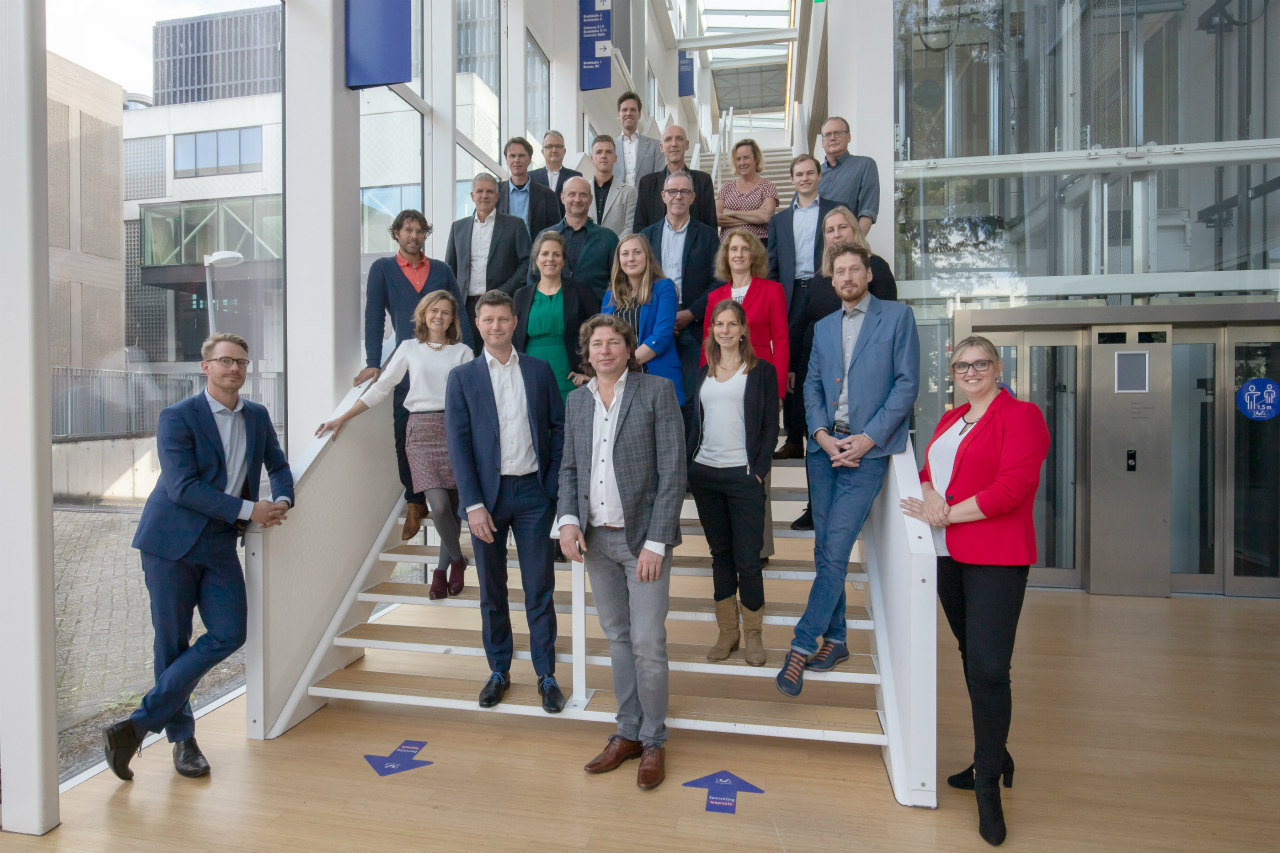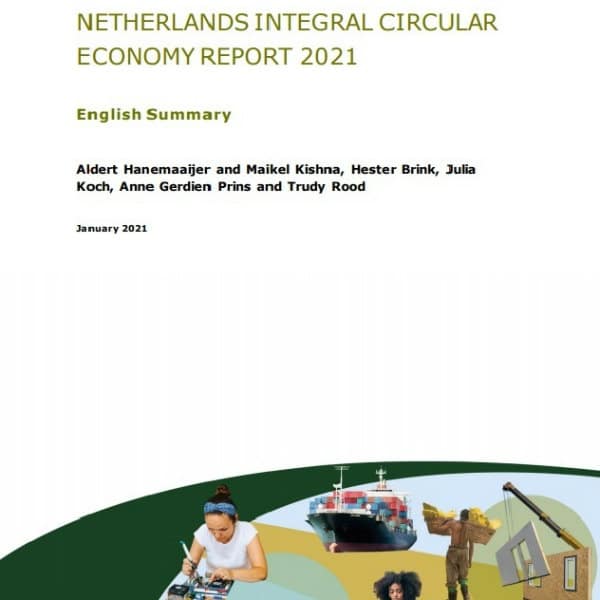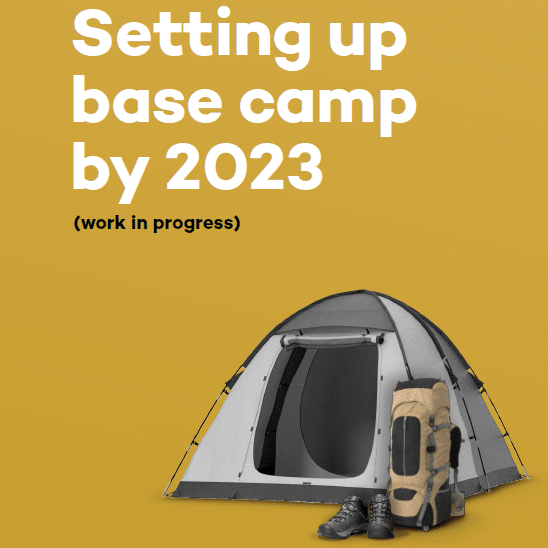Circular Construction Economy
The Circular Construction Economy Transition Agenda describes the Netherlands strategy for achieving a circular construction economy by 2050. It builds on the 'A Circular Economy in The Netherlands in 2050' programme (‘Nederland Circulair in 2050’) and The Raw Materials Agreement (‘Grondstoffenakkoord’), entered into in January 2017, in which a large number of organisations commit to the goals set in the national CE programme.
The ambition is to make the entire built environment (including housing, utility construction and the civil engineering sector) circular before 2050. This Agenda has been drawn up by a transition team comprising experts from the fields of science, the government and market parties.
Our definition of Circular Construction
The development, use and reuse of buildings, areas and infrastructure without unnecessary resource depletion, environmental pollution and ecosystem degradation. Building in a manner that is economically sound and contributes to the well-being of humans and animals. Here and there, now and later.
The Circular Construction Economy Implementation Programme
The Circular Construction Economy Implementation Programme, a collaboration between government and business, was started at the end of 2018. It has a duration of four years, from 2019 to 2023. A transition Team, supported by a transition bureau, oversees the realisation of the implementation programme.
The ministries of Internal Affairs (Construction) and Infrastructure & Water Management are responsible for progress and results. Every two years, PBL, the Netherlands Environmental Assessment Agency, monitors the progress of the circular transition in general and for the transition agendas specifically, in the Netherlands Circular Economy Report (ICER).
In three stages to the top
‘Mountain climbing’ has been used as a metaphor for the process that should lead to a circular economy in 2050; a mountain climb that goes to the top in three stages:
- 2018-2023 resulting in a completely furnished base camp.
- 2023-2030 in which 50 percent of the final objective has been achieved.
- 2030-2050 in which the goal – ‘the top’ - is achieved.
From bottlenecks to spearheads
There are already plenty of initiatives in the field of the circular construction economy. And it is clear that a circular construction economy requires close cooperation between government, the market and science. However, several bottlenecks stand in the way of the development towards circular construction. For example, there is still insufficient supply and demand, financiers are wary of the risks of innovations, and new policies and amendments to legislation and regulations are needed to remove barriers and to encourage circularity. These bottlenecks have been translated into four spearheads and 10 action points in the Implementation Programme.
Base camp in 2023
An important milestone will be in 2023 when the so-called base camp will be ready. This base camp comprises all the instruments, tools and conditions needed to proceed to the following stages. The goals and actions needed to set up base camp, have recently been detailed and are described in accordance with the spearheads of the transition agenda and implementation programme:
- Market development
- Measurement
- Policy, legislation and regulations
- Knowledge and awareness
Ambitions for Circular Construction and the goal-setting approach
The transition team published the Transition Agenda circular Construction Economy in January 2018. It describes the final goal for 2050: ‘a construction economy that is fully circular’. In this section we will explain how we go about achieving this final goal as well as elaborate in more detail the road to reaching that goal.
Definition of circular construction
The development, use and reuse of buildings, areas and infrastructure without unnecessary resource depletion, environmental pollution and ecosystem degradation. Building in a manner that is economically sound and contributes to the well-being of humans and animals. Here and there, now and later.
Base camp in 2023
The Transition Agenda explains that in 2023 a complete base camp must be realised in order to reach the ultimate goal of being fully circular in 2050. The elements that the base camp should contain are described in the publication ‘Setting up base camp by 2023’. The path until 2023 has been described in an implementation programme ‘towards the base camp (2021-2023), and is based on four spearheads:
- Market development
- Measurement
- Policy, legislation and regulations
- Knowledge and awareness
Final goal in 2050
As described, the final goal for 2050 is: a construction sector that is fully circular. This has been elaborated by the transition team:
The final goal in 2050 – a construction sector that is fully circular – means that we are then able to meet social economic needs with respect to housing and infrastructure, without overstepping the planetary boundaries in terms of CO2 emissions, pollution, loss of biodiversity and other ecological damage. In doing so, no shift of these effects takes place in time or to other countries, nor do we lose other social economic values such as security of supply, as a result of the circular construction economy.
The activities of a circular construction economy should be transformed in such a way that they no longer lead to resource depletion, CO2 emissions, loss of biodiversity and other ecological damage.
Overall, we can state that the environmental impact of a circular construction economy cannot overstep the planetary boundaries, i.e. the carrying capacity of the earth. In addition, a circular construction economy should not lead to the shifting of environmental damage to the future or other countries.
We specified this element of our final goal by stating that:
‘the development, use and reuse of buildings, areas and infrastructure in the year 2050 leads to an environmental cost indicator of zero (ECI=0)’.
Environmental cost indicator (ECI): a Dutch method that determines the environmental performance of buildings and infrastructure projects, based on the European EN 15804. The environmental impact is divided into 19 different environmental impact categories, for example global warming potential and abiotic depletion, calculated by means of a life cycle analysis.
Towards a guiding framework: the Dutch circular goal-specification approach
The transition to a circular economy has reached a tipping point, as is described in the Integral Circular Economy Report (ICER). We now need to accelerate and scale up in order to reverse the adverse resource trends and realise a circular economy. On 14 July 2021, a policy brief by PBL, the Netherlands Environmental Assessment Agency, describing how to specify and substantiate the goals for a circular economy, was presented to the Dutch parliament. PBL indicates in the policy brief that the next step should be aimed at the selection of product categories that have the greatest impact on the four main factors:
- climate,
- environmental pollution,
- biodiversity and
- security of supply.
In addition, a specific, tailored and concrete set of goals for each of these product categories should be defined. This approach applies to the entire circular economy, and will be applied to the five transition agendas that have been developed, one of which is the circular construction economy.
This concludes stage 1 of the goal-specification approach for the circular economy. The second stage focusses on the further detailing and specification of the goals of these product categories, as well as the elaboration thereof in roadmaps, and matching implementation programmes for the next four years.
Overall, the goal setting process will comprise of three steps, which we will explain below, with a brief description of the approach of the CCE transition team.
Step 1: selection of most impactful product categories
In the first step the relevant departments and transition team jointly identify the most relevant (clusters of) product categories for the circular construction economy. Central criteria for the selection is which product categories have the greatest potential to realise impact with circularity on the four factors. The CCE transition team has selected:
- residential housing
- office buildings and industrial buildings
- civil engineering structures
- roads
- installations, for residential/non-residential buildings and infrastructure, in collaboration with the ‘manufacturing industry’ transition agenda.
Step 2: setting targets
In setting goals for the selected product categories we use the final goal in 2050 as described previously, and the 2030 goal that is a derivative of this. The reduction of impact on climate, environmental pollution, biodiversity and security of supply are starting points. To this effect we use an existing and widely accepted method in the construction sector to determine environmental effects, the ECI (environmental cost indicator) method.
Step 3: elaboration into product specific roadmaps
The transition team and departments elaborate the strategy per product category combining overall goals, circularity targets, and performance goals in a roadmap. Specific expertise on cross-cutting themes such as finance, legislation, etc. contributes to the process. The roadmap also indicates which activities (measures and instruments) are needed to meet the set performance goals.
Transition team Circular Construction Economy
At the end of 2018, a transition team Circular Construction Economy (CCE), which comprises representatives from government/public authorities and the housing and civil engineering sector, was established. These professionals, in a personal capacity, direct the execution of the implementation programme, supported by a transition bureau. They convene at least five times a year.

Photo: Peter Boer
Transition team members:
Vincent Gruis (TU Delft) - Chairman
Annika Trignol (Boskalis) - Bouwend Nederland
Menno Rubbens (cepezedprojects) - Royal Institute of Dutch Architects (BNA)
Esther 't Hoen - Ministry of the Interior and Kingdom Relations
Wessel Dikker Hupkes - Ministry of Infrastructure and Water Management
Anke Verhagen Rabobank - Dutch Banking Association (NVB)
Cécile van Oppen - Copper8
Henkjan van Meer - Dutch Water Authorities (UvW)
Jeroen van der Waal - City of Amsterdam
Niels Ruijter - Dutch Confederation of Building Material Producers (NVTB)
Otto Friebel - BRBS Recycling
Paul Terwisscha van Scheltinga - Housing Association Volksbelang
Trudy Rood - Netherlands Environmental Assessment Agency (PBL)
Maarten Schäffner (Witteveen+Bos) - Dutch Association of Consulting Engineers
Edwin van der Wel - Rijkswaterstaat
Crystal Ririassa - Central Government Real Estate Agency (RVB)
Sven van Aspert - Royal Haskoning DHV
Jip van Grinsven - Alba Concepts
Transition bureau
Hans Scherpenzeel (RVO) - Secretary and programme manager CCE
Claartje Vorstman (RWS) - Programme leader infrastructure
Menno Brouwer (RVO) - Programme leader residential and non-residential buildings







